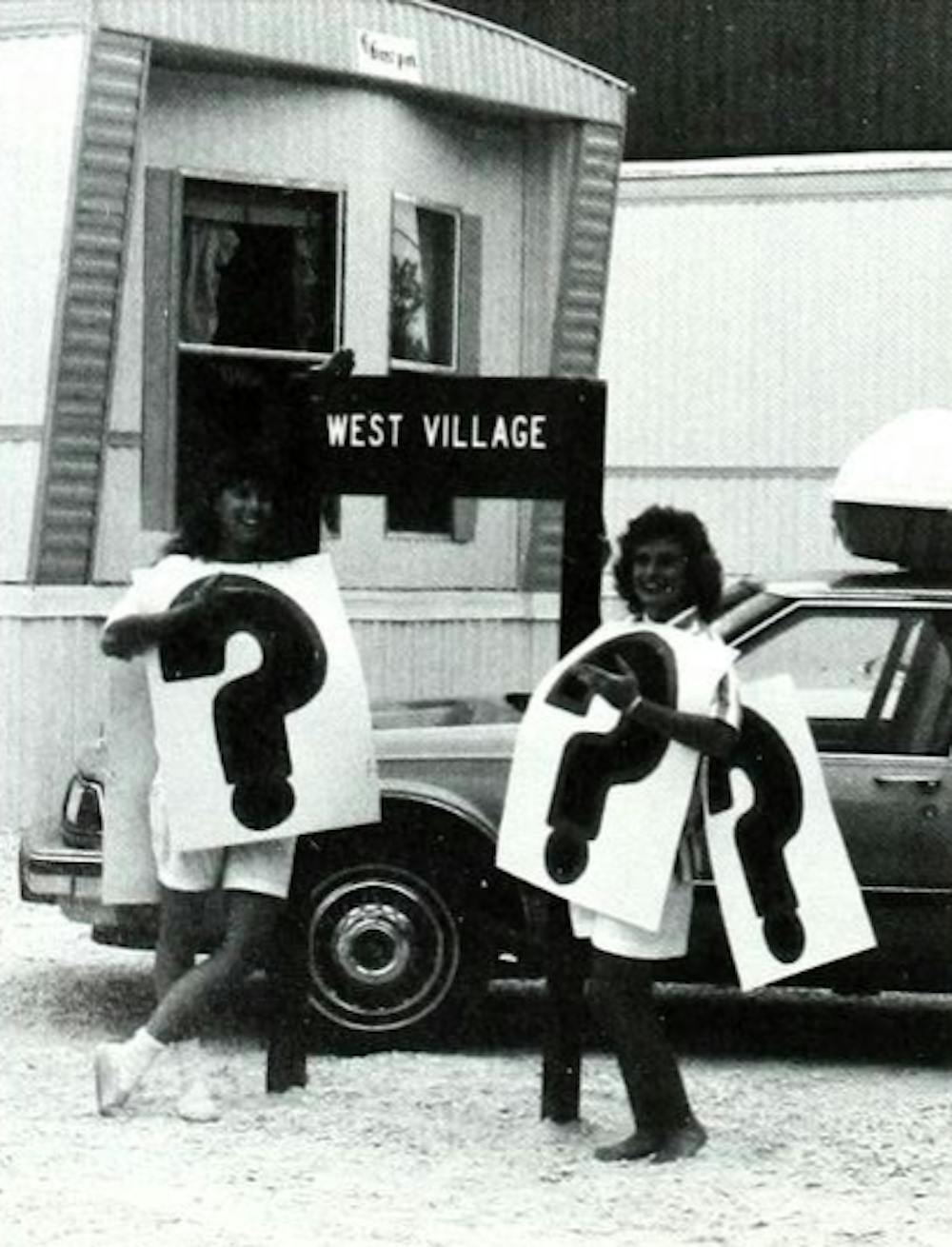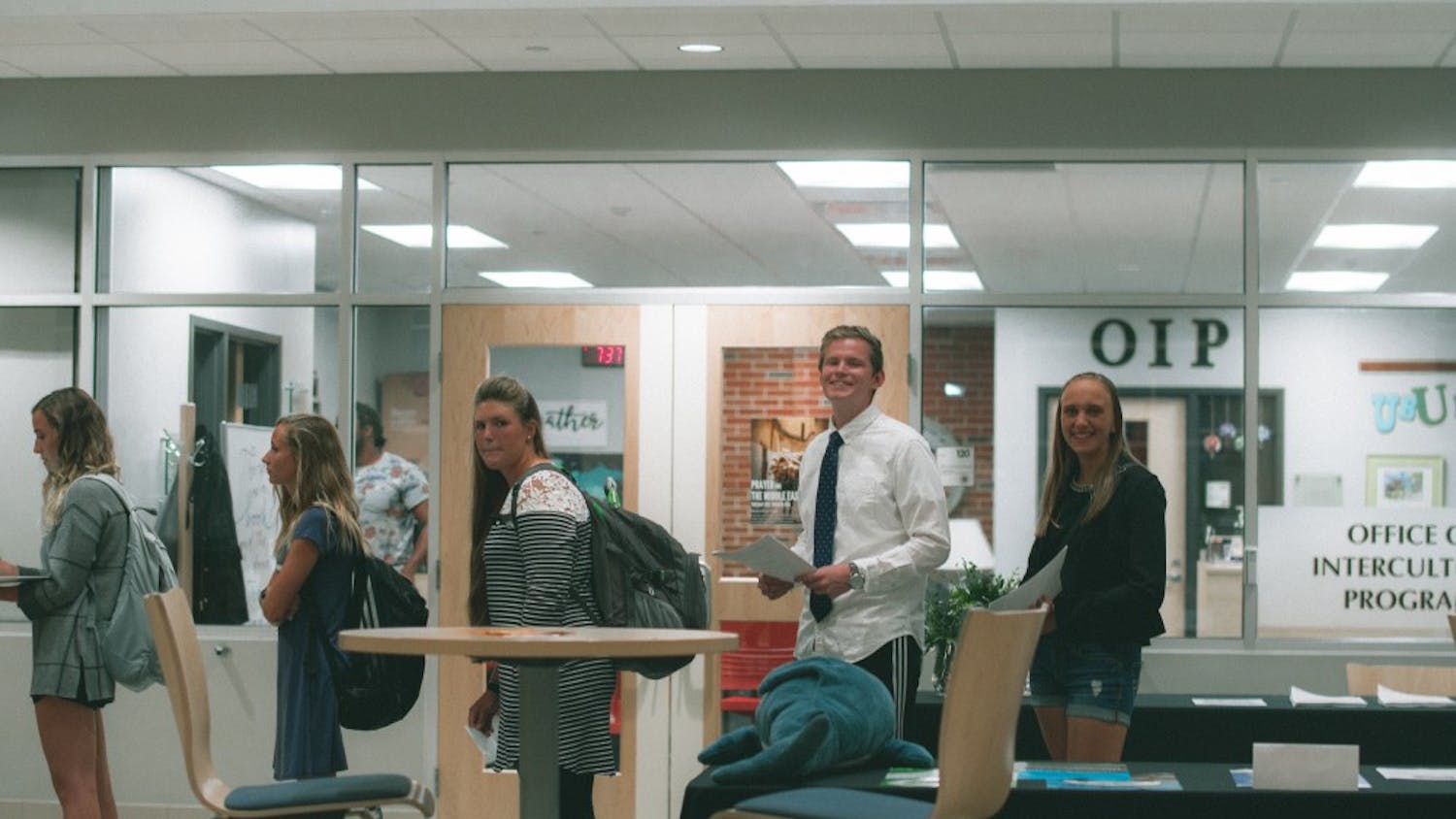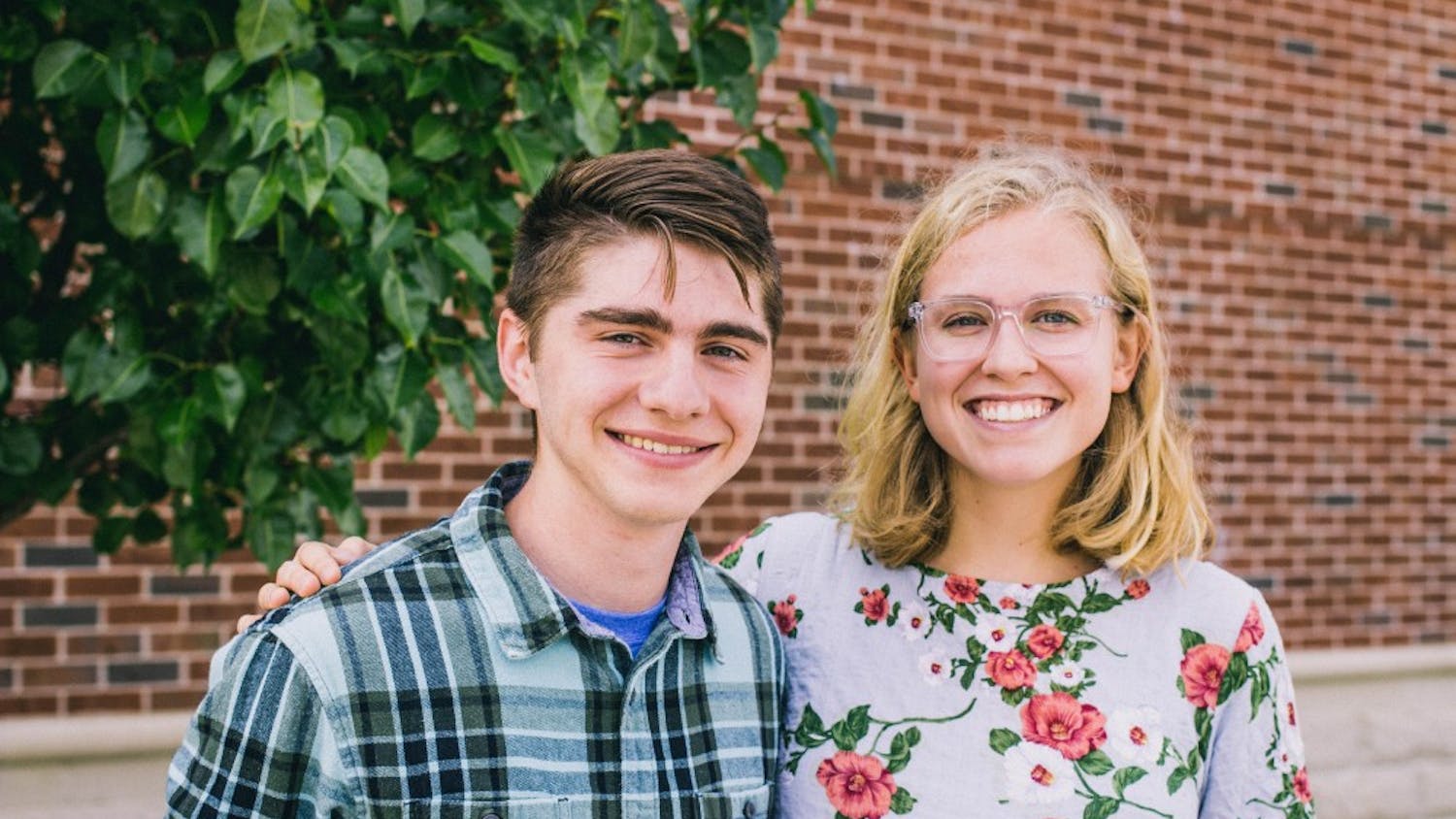When Michael Hammond opened his housing assignment letter in the summer of 1988, he was surprised when he did not see the familiar name of Samuel Morris, Wengatz or even Gerig Hall.
His housing assignment: West Village.
“What is West Village? That was my first question,” Hammond said. “Why is West Village? Was my second question. What did I do to deserve this? Was probably my third.”
Now serving as Taylor’s Provost, Hammond humorously reflected on his own time at Taylor at the faculty chapel on Aug. 30, which included the beginning of West Village’s peculiar legacy.
After record enrollment for the 1988-89 academic year, Taylor faced a student housing shortage. Although new construction had begun on a new residence building — Bergwall Hall, which would open the following year — dozens of new students were left without housing.
The university responded by purchasing 13 mobile home units for $300,000 total, according to a 1988 article from the Marion Chronicle-Tribune. The units were set up in rows behind the old Odle gymnasium and the settlement named “West Village,” as a one-year, temporary solution until the completion of Bergwall.

Each 14-by-80 foot unit had four bedrooms, two full bathrooms and a lounge area. The units, which quickly became known as the ‘mods,’ each housed six freshmen and one upperclassman as a PA.
“It’s great,” said freshman Steve Hiatt in a 1988 Echo article. “It’s carpeted, has two bathrooms for seven people, has two telephones and never gets loud like a dorm. I love it.”
While West Village did offer closer access to the gymnasium and the Dining Commons, living far away from the rest of campus did pose difficulties for the residents, who came to be known as the ‘mod squad’ and the ‘village people,’ according to the article.
In the place of a hall council, the residents formed a ‘village council,’ of which Hammond was elected mayor.
“(There were 91) of us out there, sort of suffering for Jesus on the frontier,” Hammond said, jokingly. “Beyond the village border, as it were.”
One challenge in particular for residents was the lack of laundry facilities located near West Village, Hammond said. Once a week, one of Hammond’s friends would pick up residents in a Taylor van and drive them to Wengatz and Olson to avoid the trek across campus.
Despite some of the challenges of living in West Village, most students were able to form close communities with their fellow ‘village people.’ The residents would gather on the nearby softball field to play homerun derby, Hammond said.
The Fall of 1989 brought more changes to campus. With the completion of Bergwall Hall, residents from West Village were given the option to move into the brand new residence hall. However, due to another record enrollment, Taylor decided to extend the use of West Village for another year, Provost Daryl Yost revealed to students in a July 1989 letter.
“We give praise for these numbers,” Yost wrote. “It does mean longer lines at the dining commons and a crowded chapel hour; but we are confident you’ll adjust and get excited about this blessing with us.”
Taylor sold three of the mobile homes at the start of the year, leaving 10 remaining.
By the fall of 1990, the ‘mods’ had become housing primarily for upperclassmen and athletes who enjoyed the proximity to the gym.
“We now see them [the ‘mods’] as a good option for upperclassmen to have the best of both worlds [on and off-campus living],” director of housing Denise Bakerink said in a 1991 Echo article.
In 1998, West Village was officially closed due to the opening of the new Samuel Morris Hall and the remaining mobile homes sold off. According to Hammond, one of the mobile homes was located in a mobile home park in northern Upland for many years.
Although West Village is long gone, Hammond still remembers the close connections he made with his fellow students as they dealt with the interesting environment of West Village.
“Some of the friends I made out there are still people that are good friends to this day,” he said. “This year at Welcome Weekend there were four of us who all had lived in West Village that first year, who all have our kids here now.”
Director of Assessment Kim Case, who served as the hall director of Gerig Hall in 1988 when West Village first opened, remembers the efforts taken to create an atmosphere similar to other residence halls on campus. Despite the unusual housing situation, she believes they were successful at creating such an experience, she said.
Throughout the 10 years of its existence, West Village was a significant part of hundreds of students’ experience at Taylor, from the quirks of the ‘mods,’ to the community that was forged as a result.
“For some, West Village will not be missed very much,” an article in the 1989 Illium read. “But for others, the memories of their ‘mod’ days will be cherished forever.”





